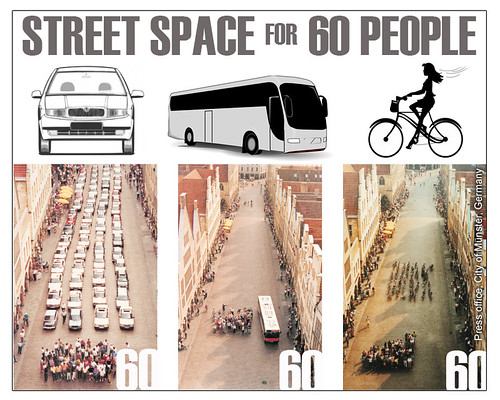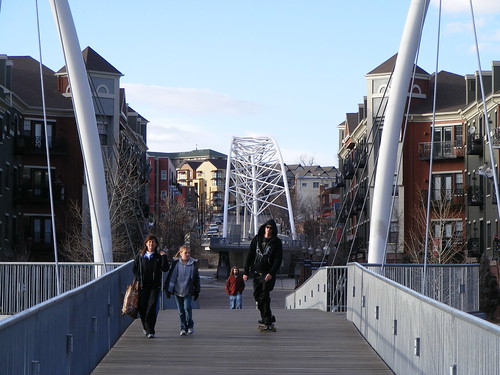 |
| A developer wants to build apartments here. Some neighbors want a park. |
Reston-based Comstock Homes seeks to build a 7-story, 200-unit building with ground-floor shops on a 1-acre property at the corner of Newell Street and Eastern Avenue currently home to a self-storage facility. Dubbed the Boulevard on Newell, the building would be allowed under current zoning and could start construction in 2014. Comstock will present their proposal at a meeting Monday, August 20 at 7pm in the Silver Spring Civic Building, located at Ellsworth Drive and Fenton Street in downtown Silver Spring.
While the South Silver Spring Neighborhood Association hasn't taken an official position on it, some residents living in the two buildings bordering the site, 8045 Newell Street and Eastern Village Cohousing, worried that the building could draw crime, block their sunlight and add more traffic to the area.
"The community is overdeveloped and there's too much density," says Brian Holland, an HR consultant who lives at 8045 Newell, in a phone interview with JUTP. "The community is beginning to say no. Enough."
Holland and his neighbors recently formed Park Now for South Silver Spring, which wants Montgomery County to buy the $2.8 million property and turn it into a park. "We request that our interests be prioritized over those of real estate developers," reads this petition, which as of Sunday night had 153 signatures.
 |
| New and old apartments in South Silver Spring, seen from the roof garden of Eastern Village. |
At the same time, the property at Newell and Eastern is a short walk from the Silver Spring Transit Center, shopping centers and some of the region's largest employers. It's also literally across the street from the District of Columbia. This is an urban neighborhood, and people who choose to live there should be realistic about what kind of development will happen in their backyard.
That said, before spending millions of taxpayer dollars to acquire and build a new park in South Silver Spring, it's worth taking a look at the parks that already exist there.
Older apartment complexes like Rock Creek Springs have tree-filled courtyards, though they're only open to people who live there. However, newer buildings like 8045 Newell are required by the county to have a Public Use Space, usually in the form of a pocket park. 37 Public Use Spaces have been built in downtown Silver Spring in recent decades, and no fewer than 5 can be found within a block of Newell and Eastern, along with Acorn Park, a public park home to the original Silver Spring.
 |
| A pocket park outside the Veridian, a new apartment building in South Silver Spring. |
Many of the neighborhood's pocket parks are poorly designed and seldom used. However, it's worth exploring how they could be redesigned or reprogrammed to meet residents' needs. There's no reason why these pocket parks, home to nebulous public art today, couldn't accommodate dog runs, jungle gyms, or something else.
Meanwhile, a few blocks away is the 24-acre Jesup Blair Park, with playgrounds, sports fields and a picnic ground. But South Silver Spring residents don't go there. "It is deemed unsafe," says Holland. "There is a perception by some that it is intruded [upon] by people who live in the District."
Evan Glass, board member of the South Silver Spring Neighborhood Association, believes access, not crime, is the biggest reason why people aren't using the park. "It is divided from the community by a cavernous Georgia Avenue," he says. "Until we figure out how to bridge that divide, it's going to remain severely underutilized."
 |
| County planners propose building a park at a redeveloped Blair Park Shopping Center. Image from the Montgomery County Planning Department. |
Those two sites may actually be better for a new park. They're both larger, at roughly 1.5 acres in size, and more centrally located within the neighborhood, allowing more residents to reach them. And a park at the Blairs, surrounded by shops, restaurants and offices, could be a really valuable space, offering a true green oasis in the busiest part of South Silver Spring.
No matter what gets built at Newell and Eastern, it's clear that there's a desire for quality park space in South Silver Spring. Hopefully, the community can come together to make it happen. "The association is trying to work with all parties involved, especially the residents, to make whatever outcome the most appealing for everyone," says Glass.








